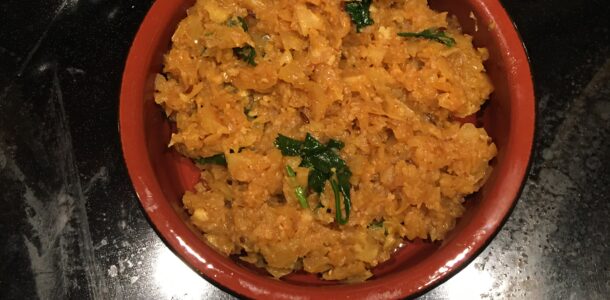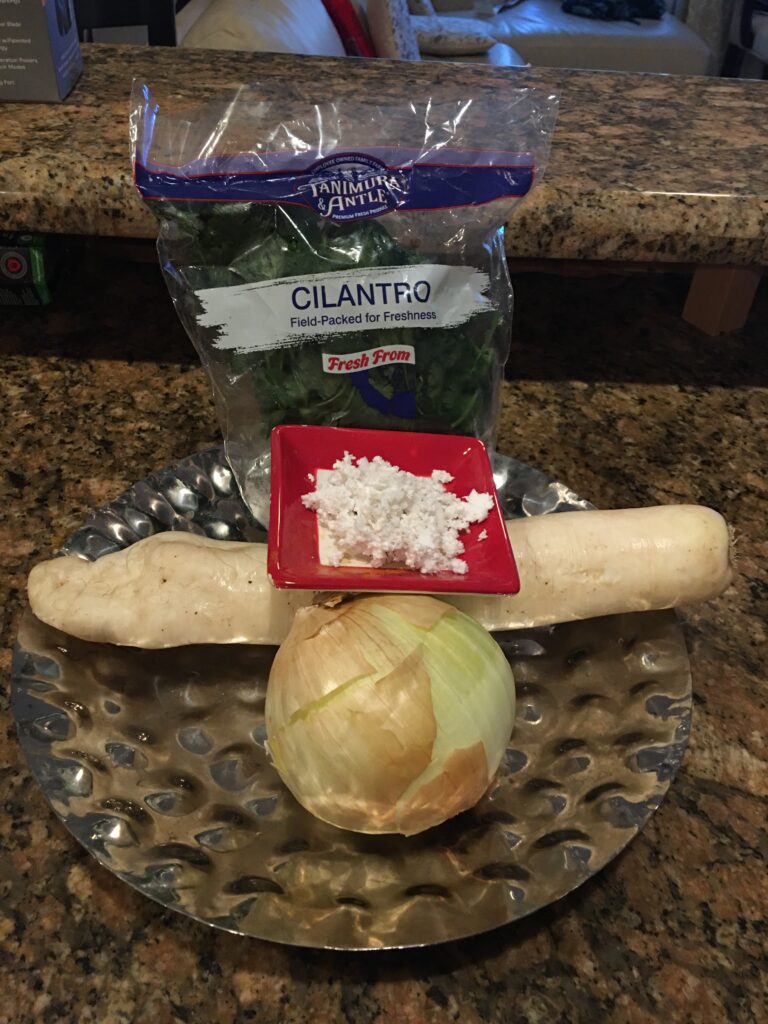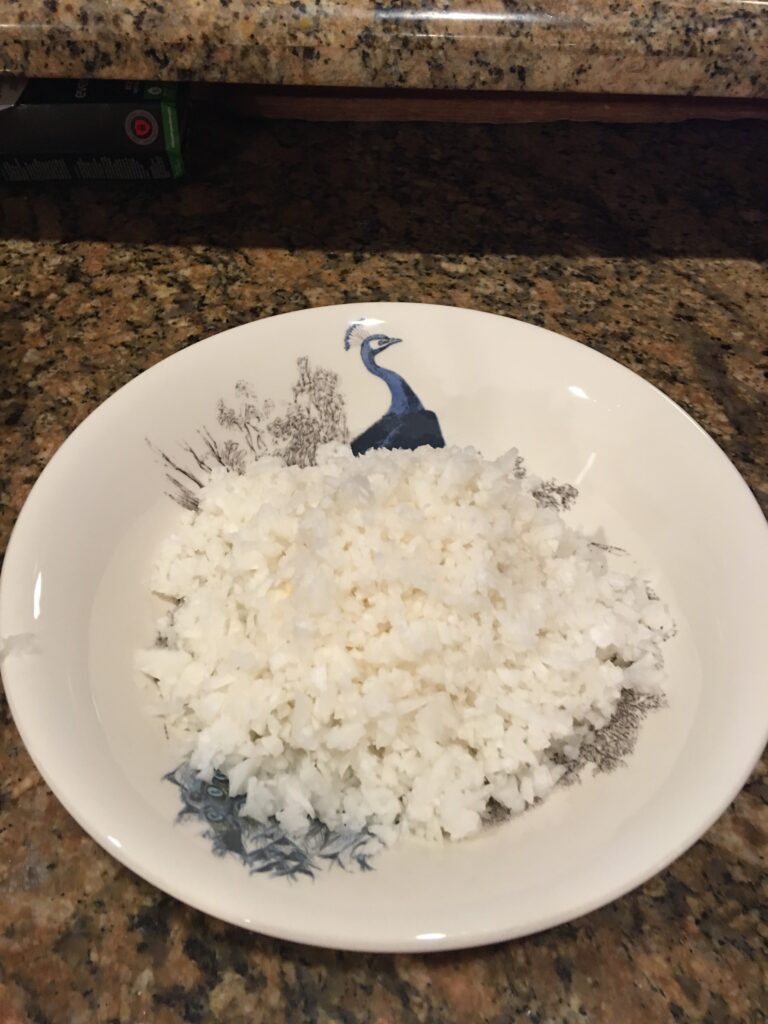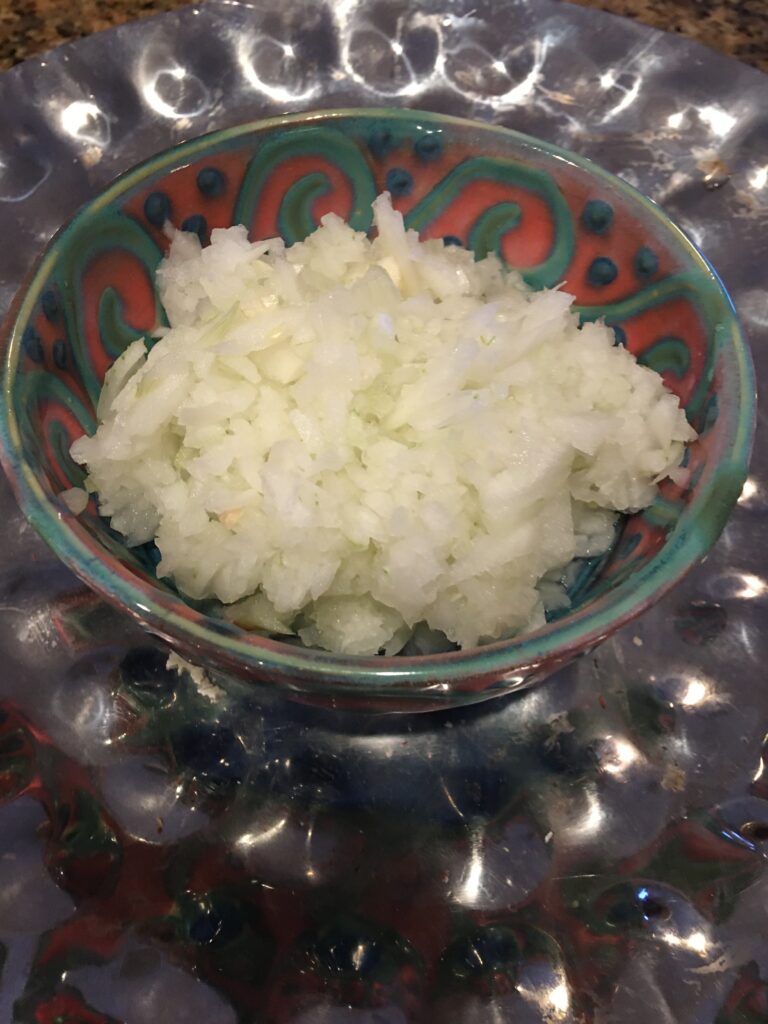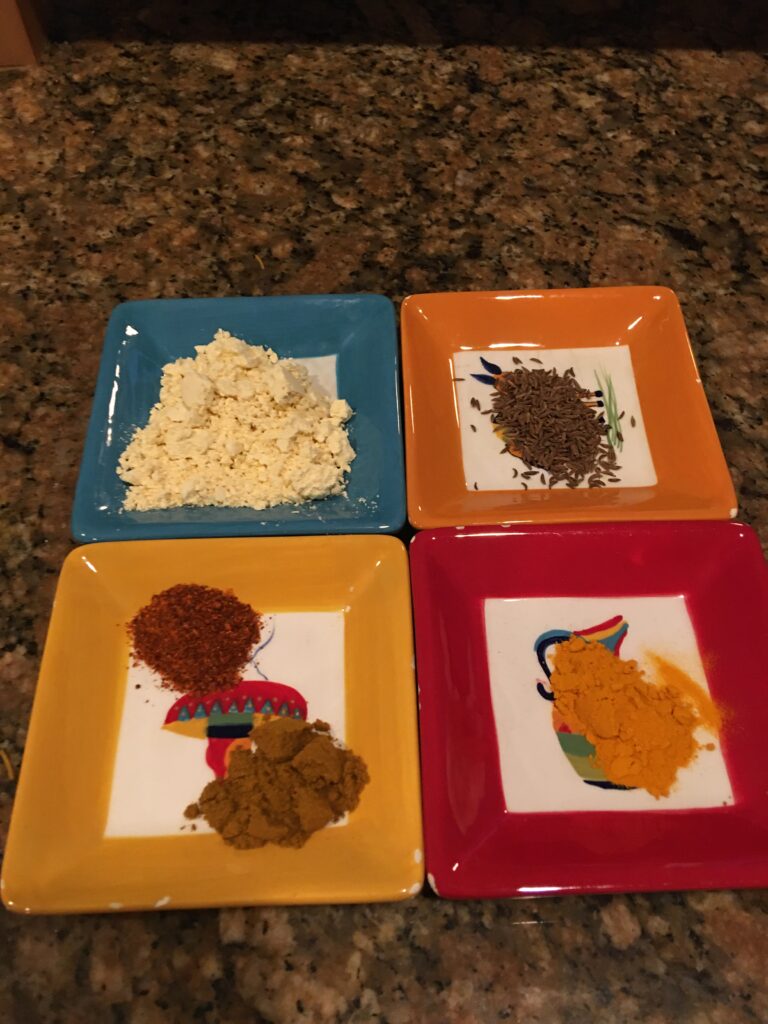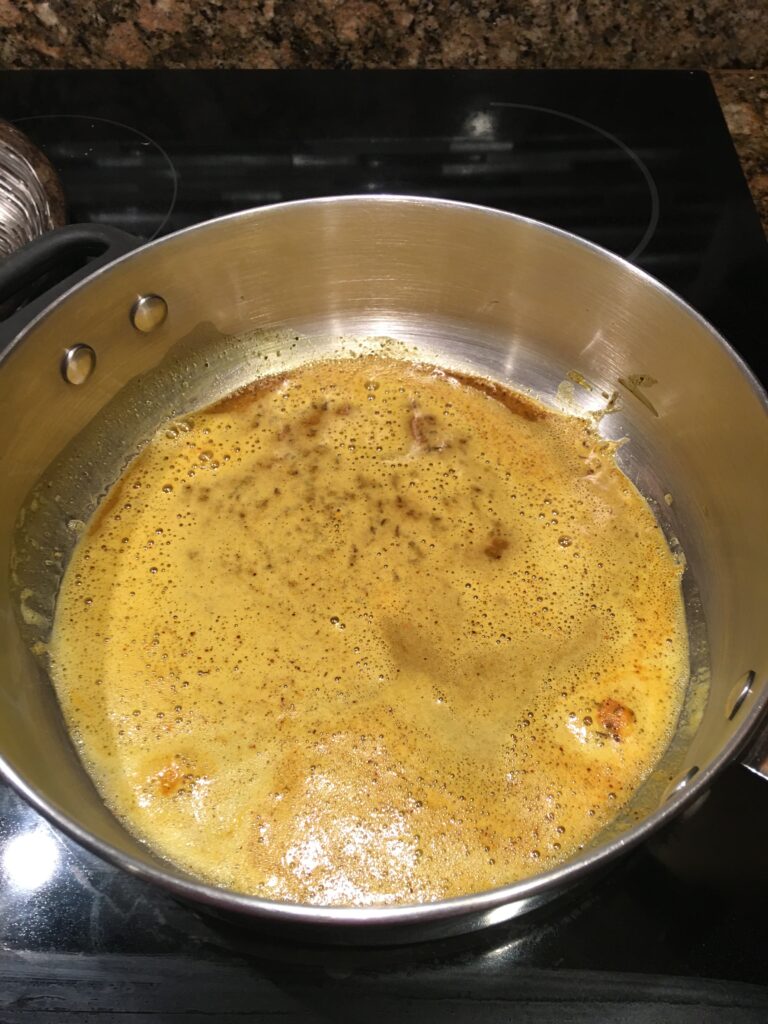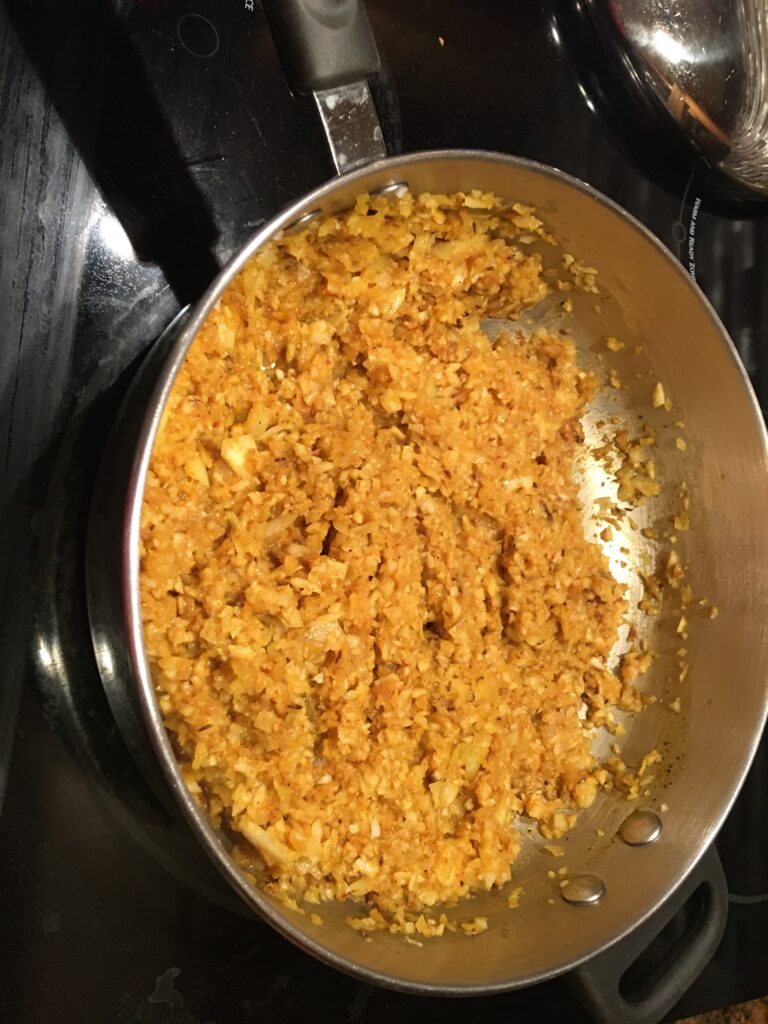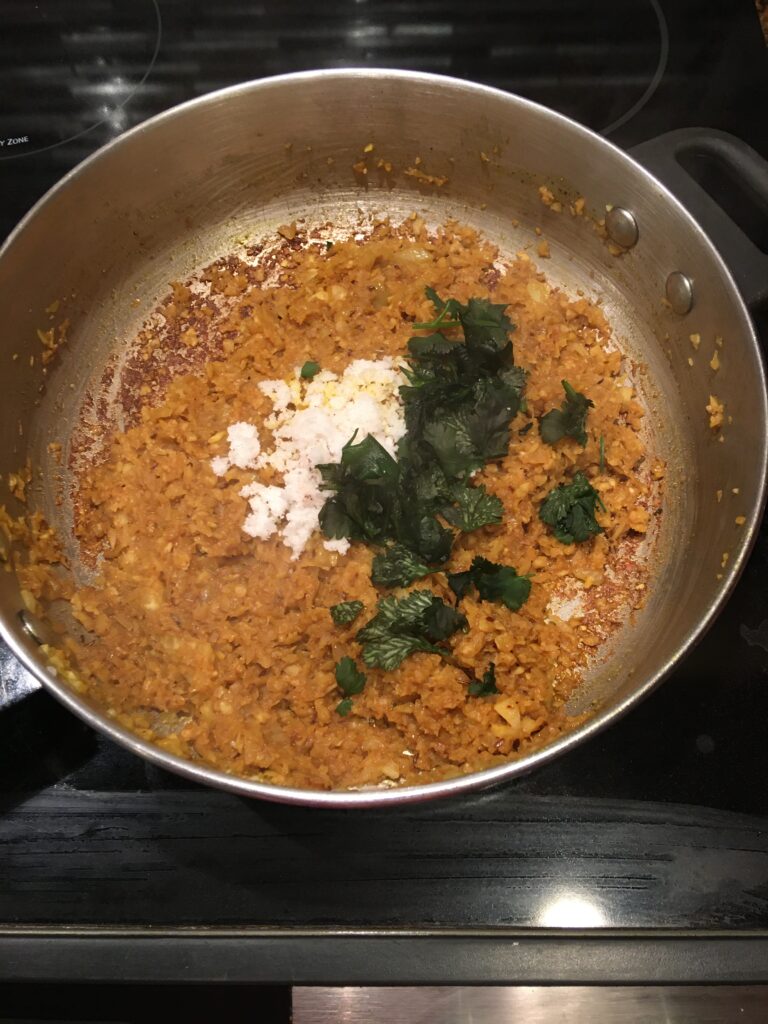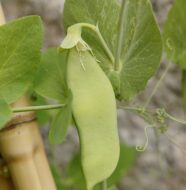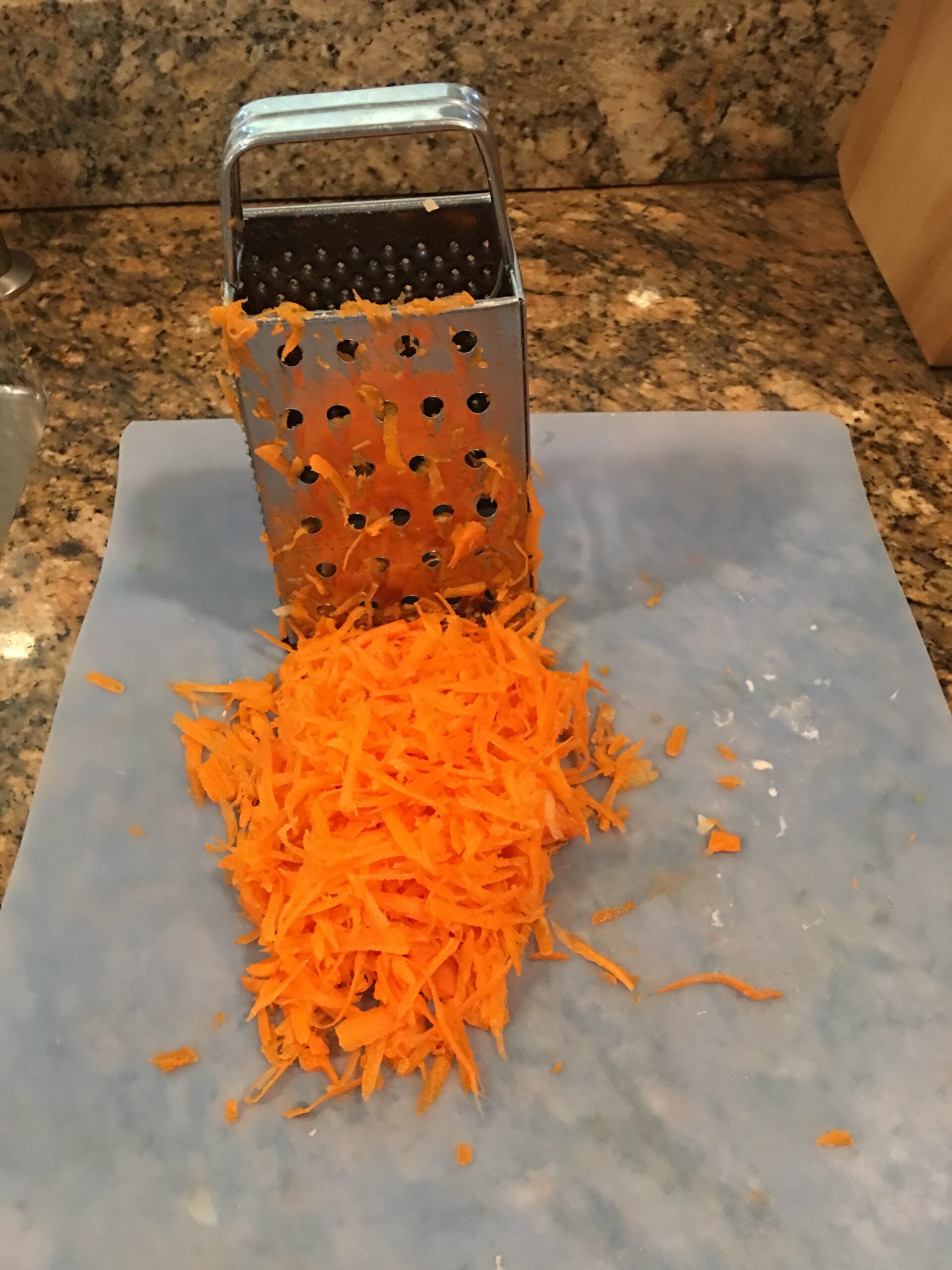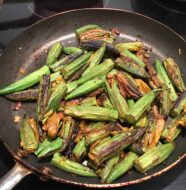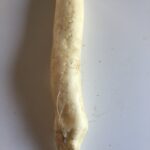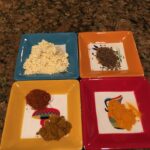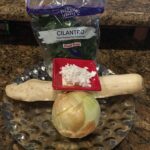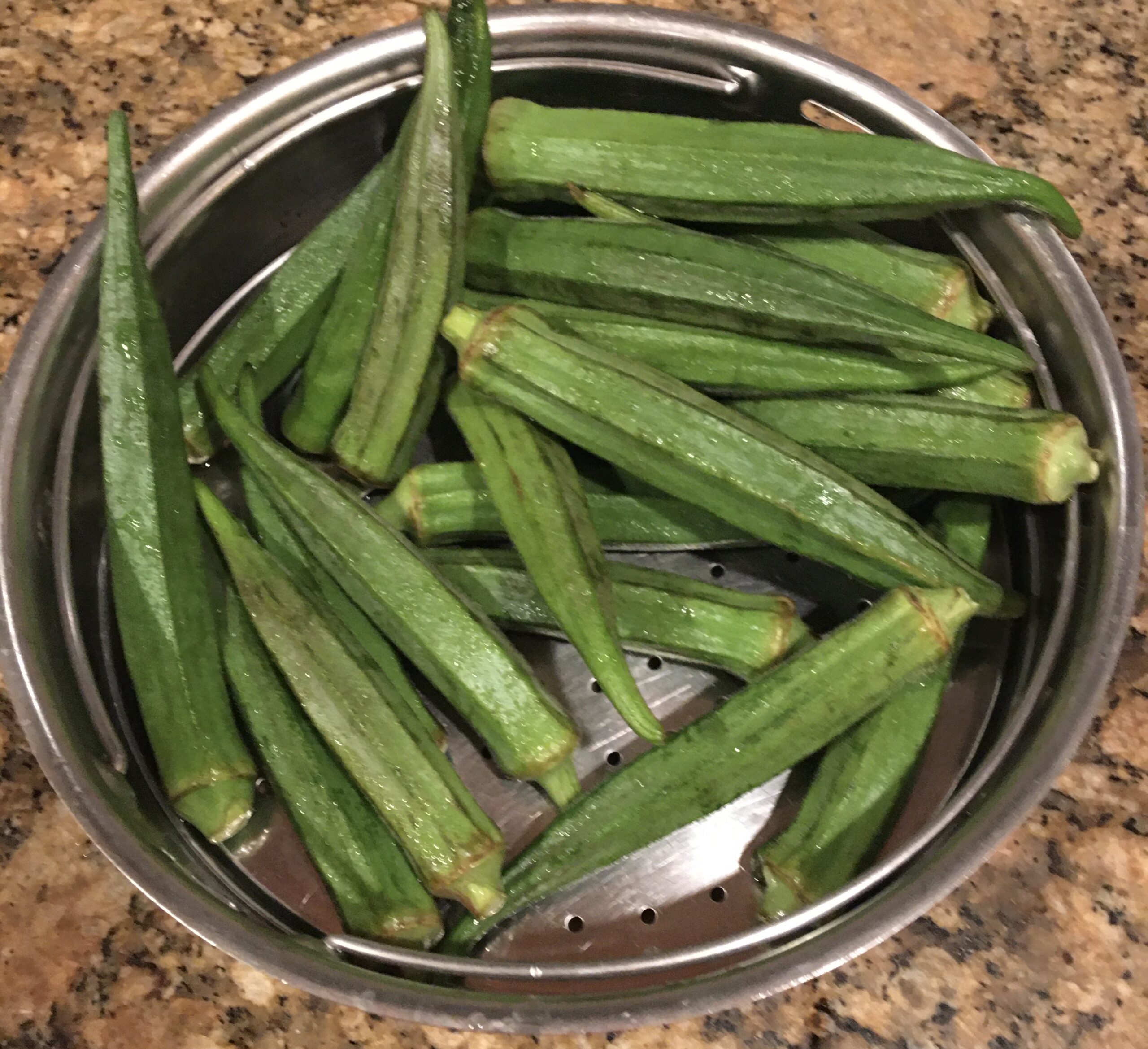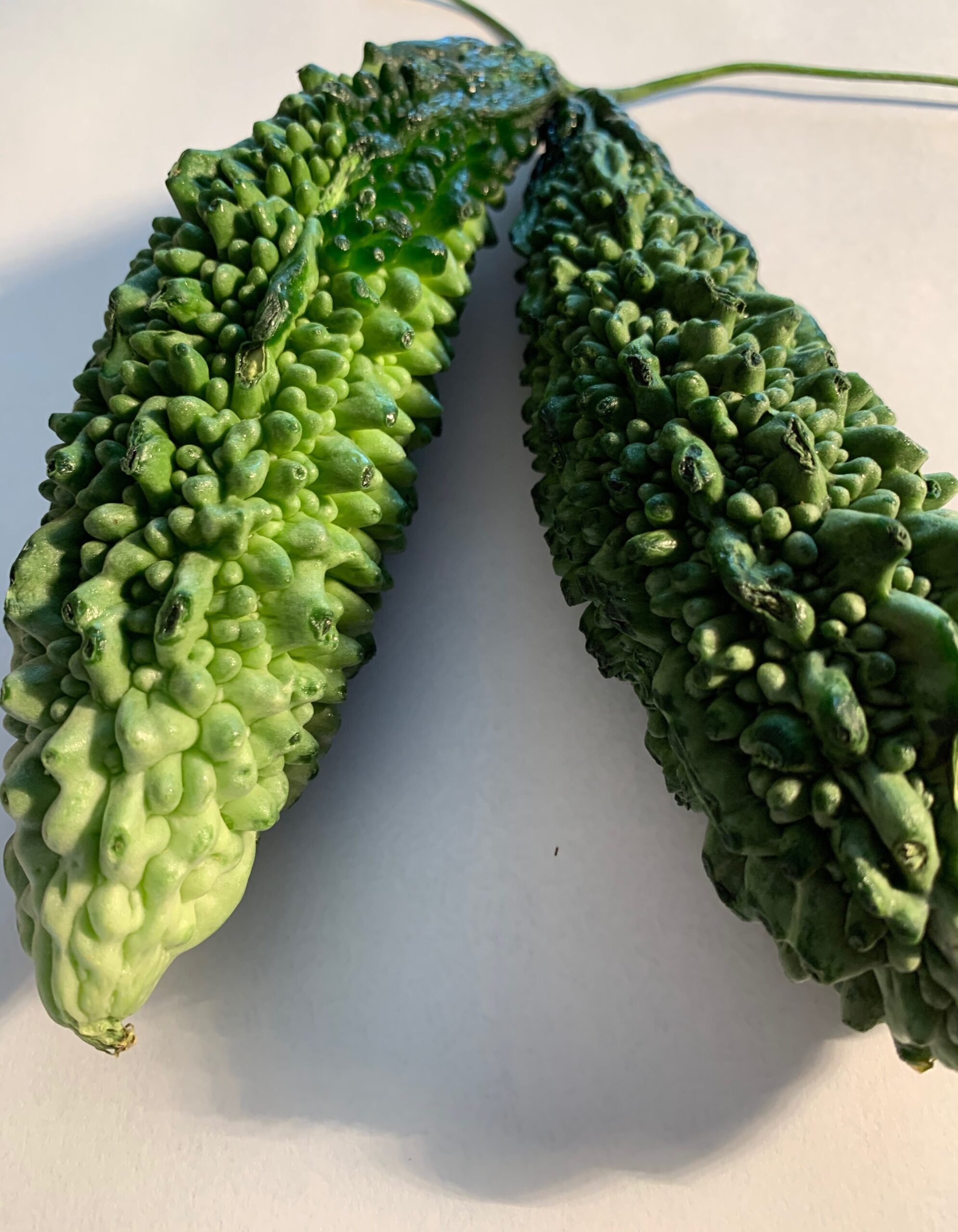Radish with Botanical name “Raphanus Sativus“, is also known as Winter Daikon (icicle) is the most widely cultivated vegetable in the world. As per the Chinese, eating radish and other Brassica family vegetables like cabbage or cauliflower would contribute to wholesome health. Daikon or Japanese white radish is native to Asia – a nutritious root vegetable eaten in salads or in main dishes. Tender top greens are also eaten in some parts of the world. Radish has a unique flavor and contains plenty of water. It can be chopped or grated and sauteed with onions to be eaten as a Subzee (side dish) or used as a filling to stuff in flat-breads (Parathas). Radish grows in red, white, purple, black colors & cylindrical or round in shape. Radish is eaten raw, cooked & pickled. Radish leaves, flowers, pods & seeds are consumable.
Buying and Storage: Available all months in the year with the peak season during winter and spring. Look for roots looking fresh, stout & firm in texture. Their top greens should be fresh without any yellow or shriveled leaves. Remove top greens, wash thoroughly and wipe. Store in the zip pouch in the refrigerator. T
History: Radish originated in mainland China centuries ago and today it is one of the most widely grown crops in the world. Radishes are grown in different varieties: White icicle, Black Spanish, Daikon Long white, Early Scarlet gold, French Breakfast, Fire and Ice, and Green Chinese. Purple round or Watermelon radish are special varieties. Black Spanish radishes are peppery and more flavorful. In Chinese culture radish along with Tofu (soybean -curd ) and cabbage are believed to be healthy and sustenance food items. A popular Chinese proverb goes thus ” Eating pungent radish and drinking hot tea, let the starved doctors beg on their knees.”
Radish Recipes
Minced Radish (Mooli Kheema)
Radish Stuffed Parathas (Mooli Parathas)
Red Radish in Tamarind Sauce ( Mullangi Sambhar)
Nutrition Facts of Radish (white)
| GI 32; GL 1 water= 95.3 g |
Minerals | Vitamins |
| Calories……….16 | Iron (Fe) mg ……..0.34. | vitamin. A IU…… 7 |
| Carb.(g.)………3.4 | Sodium (Na) mg …..39 | vitaminB 6(mg)……0.07 |
| Sugar (g.)……..0.1 | Potassium (K) mg .233 | vitamin.C (mg.)…..14.8 |
| Fiber (g) …..1.6 | Calcium (Ca) mg …..25 | Folate(mcg)……25 |
| Protein (g)….0.68 | Magnesium (Mg) mg.10 | Vitamin K (mcg)……1.3 |
| Fat (g)………….0.1 | Manganese.(Mn) mg 0.06 | Riboflavin. mg…0.04 |
| A Carotene(mcg4 | Copper……0.05 | Niacin mg ……0.25 |
| BCarotene(mcg).4 | Zinc (Zn) ………….0.28 | Lutein /Zea Xanthin.(mcg).. 10. |
Health Benefits of Radish
- Radish relieves symptoms of constipation being very high in fiber and promotes regular excretory patterns.
- Radish may be useful in treating jaundice: black radish and leaves act as powerful detoxifiers;
- Radish juice relieves symptoms of piles by soothing the digestive and excretory system;
- Radishes are diuretic; they increase the production of urine; help treat kidney disorders
- Radishes help with efficient weight loss & metabolism being high in fiber, thus improve regular bowel movements.
- Radishes can reduce blood pressure since they are a good source of potassium that relaxes the blood vessels.
- Radishes help regulate the absorption of sugars in diabetes patients with a low glycemic index GI (32)
- Radish seeds have detoxifying and anti-carcinogenic properties that can help treat Leucoderma.
- Radish can prevent Bronchitis and Asthma from being anti-congestive, they decrease congestion of the respiratory system.
- Radish juice with black salt can relieve inflammation and infection and fight fevers.
- Radishes are a good source of Anthocyanins; positively linked to reducing the occurrence of cardiovascular disease.
- Radish can help with cancer treatment since they are rich in vitamin C, Folic acid, and Anthocyanins; connected to treating colon, kidney, stomach, intestine, and oral cancer.
- Medical benefits of Radish: maintains blood pressure levels, treats jaundice, prevents hemorrhoids (piles), cures constipation, kidney ailments, helps in losing weight, helps with liver functions – good for diabetic patients, keeps the body hydrated, enhances the immune system.
https://www.organicfacts.net/health-benefits/veget
Method to cook Minced Radish (Mooli Kheema)
- Peel skin and grate the radish using a grater. (5 min.)
- Peel and chop onion very fine (minced). (2 min.)
- Heat oil in a frying pan; add cumin seeds, gram flour and spices; stir until flour turns golden. (2 min.)
- Add minced onions and sauté until they turn translucent. (2 min.)
- Add grated radish and cook; continue to stir and sauté until dry. (4 min.)
- Remove from heat; garnish with coconut, washed and chopped herbs.
Serve White Radish Kheema with Quinoa, Brown rice, Pasta, Bread Rolls, or Naans.
TIPS
Variation: Red radish can be made in a similar manner
Variation : Grated carrots make a good combination with radish
Mooli = radish; Kheema = grated & cooked vegetable

